It’s amazing what you find when you actively travel off the beaten path. We had enough of crowds after a weekend in Utah’s Zion National Park. We like people, but the lineup for the shuttle into the canyon was like something out of a popular theme park. Leeds is only 30 miles (50 km) away. In addition to the area being less busy, Leeds is the perfect basecamp for adventure and it has a cool history to share!
Disclosure: This post contains affiliate links. If you buy something from one of our affiliates, we receive a small commission at no extra charge to you. Thanks for helping to keep our blog up and running!
Table of Contents
Leeds History: Rock on Alma!
Alma Angell’s stone house arrived in 1868. In 2005, they were going to tear it down. Leeds locals took action. They saved the stones and built a series of rock benches and stone monuments. These pillars highlight local history along Main Street.
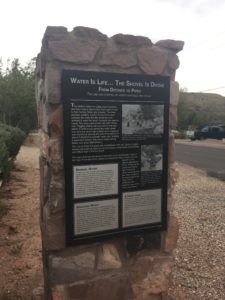
The first and largest monument is in front of the town hall. It speaks to the ups and downs of trying to establish a community in the desert in the late 1800s. Water is, was, and always will be the key to survival. Harrisburg was the first local town to fledge in 1861. Leeds rose to prominence in 1867. Leeds was first called Road Valley and then Bennington before locals settled on the name we know it by today.
Silver Reef: Growing, Growing, Gone!
Silver Reef is the third town in the area. With the discovery of silver on the white ledge above Leeds, settlers moved in. By 1878, the population of this mining community surged far ahead of the smaller farming town in the valley below.
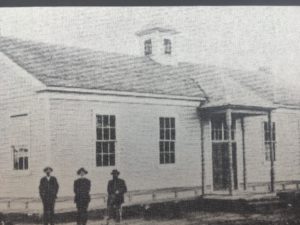

Although Silver Reef was booming, it still depended on fresh produce from Leeds to feed its growing population. In the end, food proved to be more valuable than silver ore. The farming town of Leeds settled in for the long haul. Silver Reef joined Harrisburg as a ghost town.
A second interpretive panel in the same spot talks about the history of the old Silver Reef schoolhouse, built in 1880. Just over 20 years later, the building became the Leeds schoolhouse. In 1956, it was church. Today it is the town hall.
Interpreting the Past
The Tithing Office is the site of the second monument just down the street. It was built between 1891 and 1892. Most of the area’s early settlers were Mormon. Tithing – or giving a portion a family’s income to the church – is an important part of the Mormon religion. Tithes came in many forms, including fresh and preserved produce. Agriculture was a large part of the Leeds economy. The town was renowned for its produce, especially its peaches. Sadly, few orchards remain today.
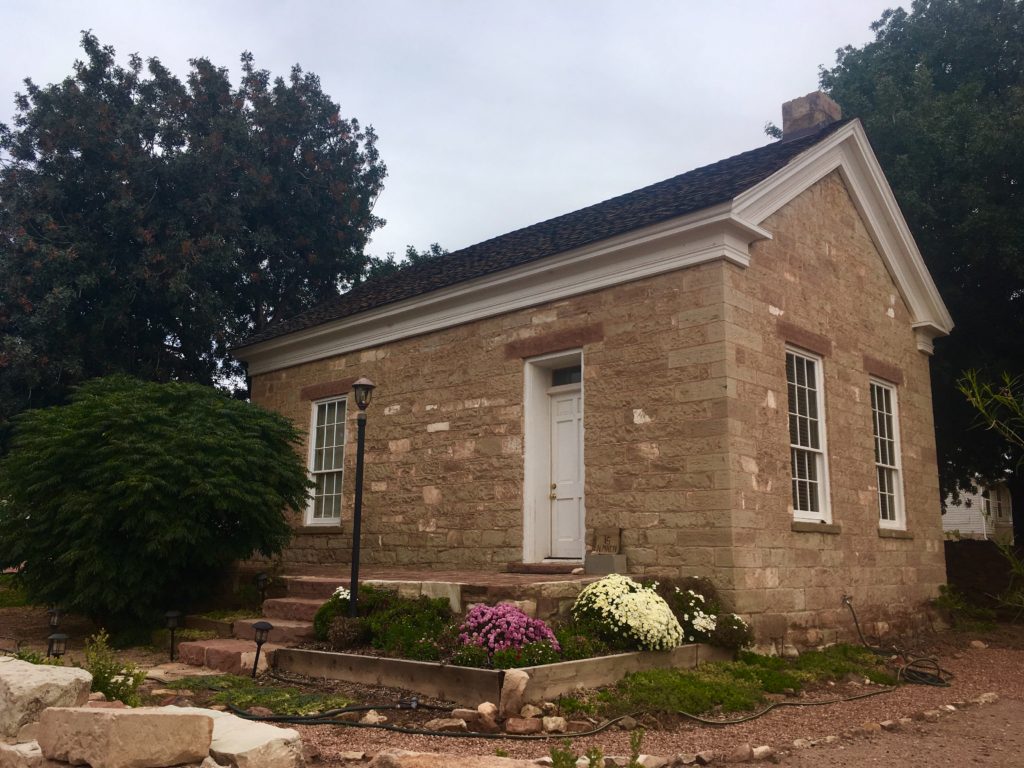
Across a side road off the main street in Leeds is a third monument. This one discusses traditional travel routes. The Paiutes, or Pah-utes, lived along Leeds Creek. The town’s history is intrinsically tied to water. “Pah” means water. People always travel where there was water.
Traditional paths became roads and travellers passed by this corner home near the monument. Tucked away in mature growth, the building was nicknamed the Mormon Hotel. Countless church officials passed through and stayed here on their way to and from Salt Lake City.
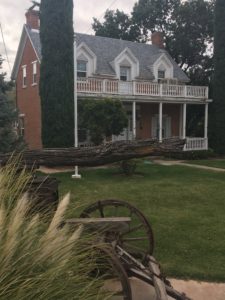
Building a Stirling Home
The Sarah Ann and William Stirling Home lies across the main street. It is a solid two-story brick home. The monument shares the compelling story of William Stirling. He was a farmer, winemaker (wine was used in the Mormon sacrament – or communion – during the 1800s), and CEO of the Leeds Water Company.
One day while out riding his horse, Stirling passed by one of the silver mills. He saw that it was dangerously close to overheating due to frozen pipes. Stirling got busy. He diverted the Leeds water supply to help cool the mill and saved it from exploding. The mill owners were so grateful that they put Stirling on the payroll for a year. Easy money for little work. Stirling used the cash to build his house in 1876.
History of water in Leeds
The final monument made of stones from Alma Angell’s home lies directly across the side road. It drips details on the life blood of the desert – water. One of the sidebars includes a quote from a local resident. Her family hauled water from a spring near the CCC camp in the latter part of 1940s.
Here’s a little background history. CCC stands for Civilian Conservation Corps. It was a program started by President Franklin Delano Roosevelt during the 1930s Depression. Men between the ages of 18-25 with at least 3 family members dependent on their income were given work for $30 a month. The majority of this was sent home to their families.
Read more about the CCC in this colossal post!
The Leeds CCC camp was built in 1933. You can find it today just down the road from the Stirling House and the Tithing Office. It is one of the best remaining examples of its kind in Utah.
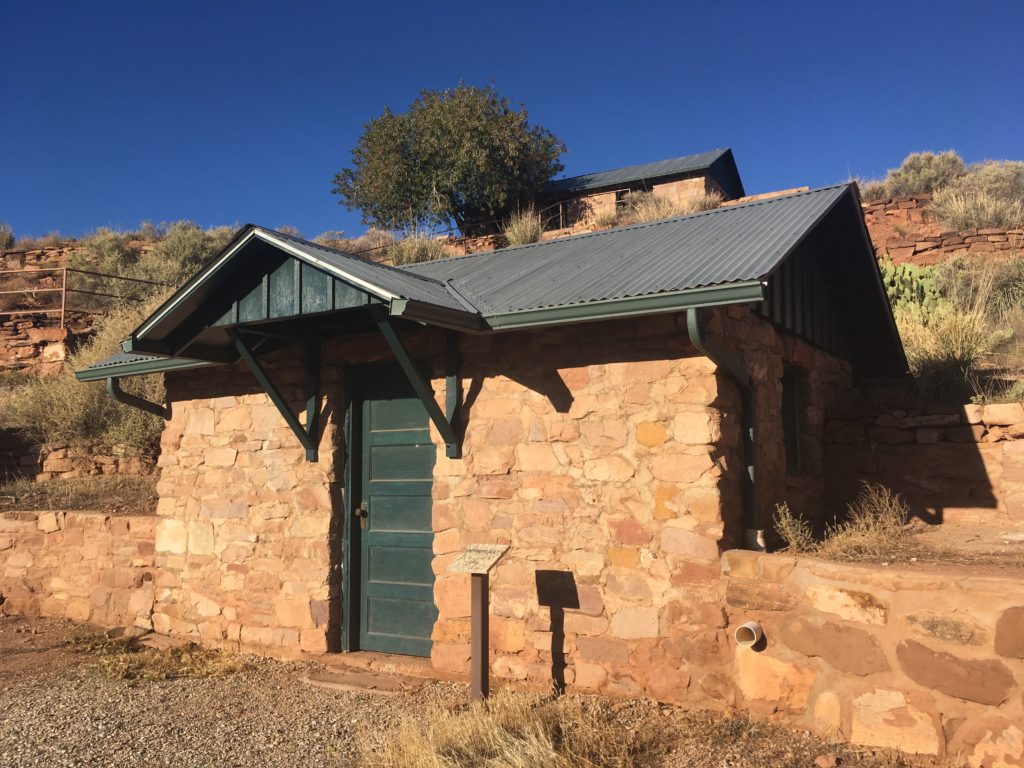
Leeds – it’s a place where history buffs and roadside explorers discover that places and people matter. It’s place where stories become the building blocks of where we stand today.
When You Go
Leeds is located in southwestern Utah, 16 miles (26 km) north of St. George. There are excellent biking and hiking options nearby. Get a good map for more recreational opportunities.
There are two RV parks in town, a nearby KOA and free designated camping (at time of writing) in the Dixie National Forest on FR032. Leeds also has a small grocery store for supplies.
Be sure to check out Snow Canyon State Park near St. George when in the area!
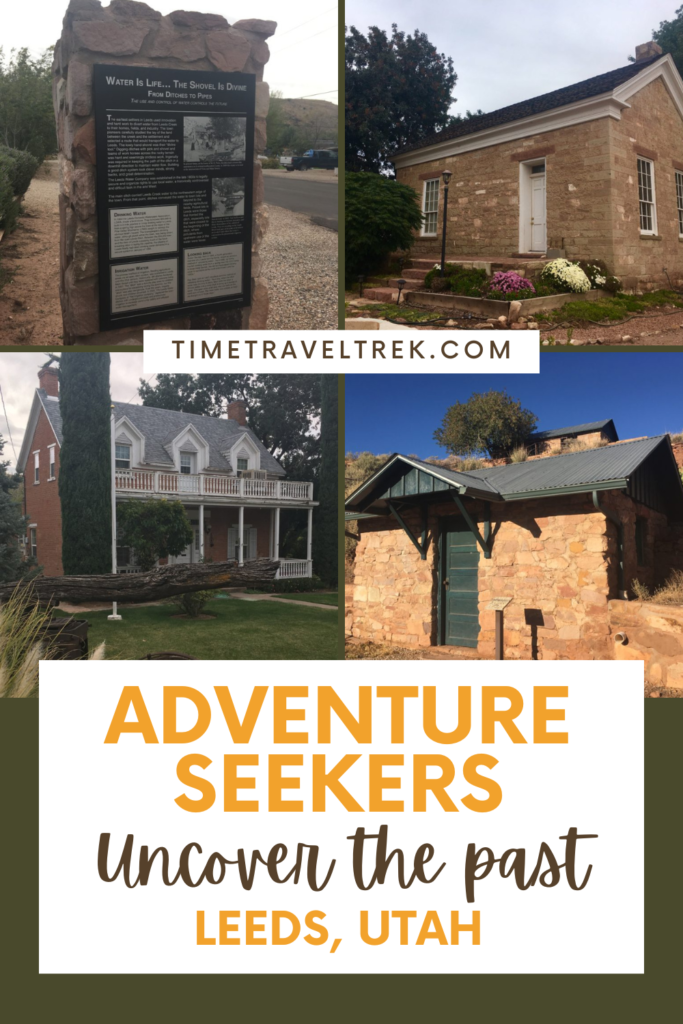
Leave a Reply